
Chinese Rocket Engine Test a Big Step for Space Station Project
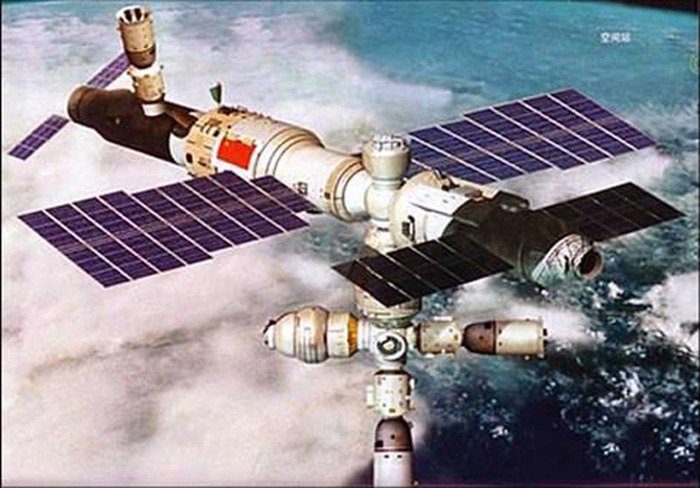
China has successfully test-fired the rocket engine that will power the next-generation heavy-lift booster, the Long March 5, that will help drive the country's space exploration into the final frontier.
The new rocket engine is closely tied to China's planned space station, and is a big step forward for the country's moon exploration program. The first engine test, carried out on June 29, lasted roughly three minutes from ignition to shutdown, according to the China Manned Space Engineering Office.
The Long March 5 is one of China's new generation of rockets, which feature larger carrying capacities, are being pursued during a 12th Five-Year Plan period (2011-2015). Addition to the Long March 5, China is drawing up plans fora medium-size Long March 7. [See photos of China's planned space station]
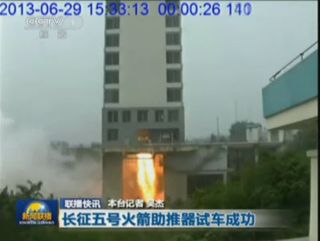
"The rockets in service cannot meet the demand from a future manned space station," Yuan Jie, deputy general manager of the China Aerospace Science and Technology Corp. (CASC), told the state-run Xinhua news agency in June. "We need rockets with even larger carrying capacities."
Space station plans
The Long March 5 rocket will be mainly used for the lofting of China's manned space station, CASC's Yuan said, adding that it has the capacity to carry a 20-ton (18 metric tons) payload to near-Earth orbit.
China's planned Long March 7 booster can place 13 tons (12 metric tons) into Earth orbit, and is designed to launch cargo spacecraft to the country's manned space station, Yuan said.
Get the Space.com Newsletter
Breaking space news, the latest updates on rocket launches, skywatching events and more!
Wang Zhaoyao, director of China's manned space program office, said the plan envisions placing a new Tiangong 2 space laboratory in orbit by 2015, ostensibly to further sharpen the skills and technologies needed to build a larger space station.
China would then launch an experimental core module of the larger space station in 2018. By 2020, China's manned space station would be fully built, Wang told reporters at a news conference following the landing of Shenzhou 10, China's recent piloted space mission, on June 25.
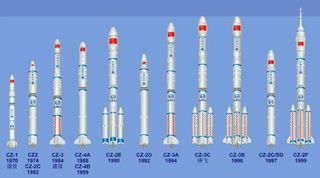
Smooth progress
The Long March 5 and Long March 7 boosters — each slated to fly before the end of 2015 — will launch from China's Wenchang Satellite Launch Center, which is currently under construction near Wenchang on the northeastern coast of Hainan Island.
CASC's Yuan said the next-generation launchers employ innovative technologies, including new engines that use nontoxic and nonpolluting liquid fuel.
Wang said "smooth progress" has been made in building up China's new launch center since the start of site work in September 2009. Its main structure has been completed, he said, including the testing labs for carrier rockets and spacecraft.
It is the fourth space launch facility in China, after Jiuquan, Taiyuan and Xichang launch complexes.
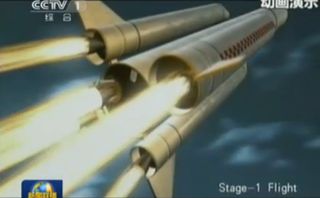
Simultaneous launch campaigns
According to the independent DragonInSpace.com website and its sister site Chinese Space Blog, the total cost of the launch-center project was estimated to be RMB 5 billion Chinese ($810 million).
Satellite imagery of Wenchang posted on the DragonInSpace.com clearly shows the Long March 5 and Long March 7 launch pads. Each launch pad has an independent vehicle assembly building, permitting simultaneous launch campaigns, according to the website.
Once in operation, the Hainan launch complex will host launches of heavy geostationary telecommunications satellites, support missions for the construction of China's space station and help further the country’s lunar exploration agenda. Meanwhile, piloted space missions will continue to be conducted from the south launch site at the Jiuquan Satellite Launch Center, DragonInSpace.com reported.
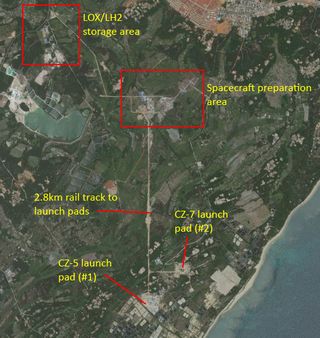
Radical, unnoticed shift
China's space progress has been closely watched by Gregory Kulacki, a senior analyst and China project manager within the U.S.-based Union of Concerned Scientists' Global Security Program.
"In addition to supporting a new generation of Chinese space launch vehicles that will greatly expand China's capability to carry larger and heavier spacecraft into Earth orbit and beyond, the opening of the new launch facility on Hainan Island next year will mark a radical and largely unnoticed shift in the culture of the Chinese space community," Kulacki told SPACE.com.
"Histories of the Chinese space program speak in reverent terms about the sacrifices of generations of Chinese space scientists and engineers who suffered the deprivations of living and working in the existing facilities built in the remote and inhospitable dessert of western China," Kulacki said. "Guarded by the military, cloaked in secrecy and imbued with an almost religious sense of political importance, the products of China's traditional space culture are remembered as national heroes."
The new facility in Hainan is envisioned as a future Mecca for middle-class Chinese tourists, surrounded by coconut groves, a beach resort, museums and an amusement park, Kulacki said.
"Its completion will mark the beginning of a transition for China's space culture, from the cloistered preserve of specialists employed by the military to a more commercial and entrepreneurial enterprise that is open to the general public," Kulacki said.
Leonard David has been reporting on the space industry for more than five decades. He is former director of research for the National Commission on Space and is co-author of Buzz Aldrin's new book, "Mission to Mars – My Vision for Space Exploration," published by National Geographic. Follow us on @Spacedotcom, Facebook and Google+. Original article on SPACE.com.
Join our Space Forums to keep talking space on the latest missions, night sky and more! And if you have a news tip, correction or comment, let us know at: community@space.com.

Leonard David is an award-winning space journalist who has been reporting on space activities for more than 50 years. Currently writing as Space.com's Space Insider Columnist among his other projects, Leonard has authored numerous books on space exploration, Mars missions and more, with his latest being "Moon Rush: The New Space Race" published in 2019 by National Geographic. He also wrote "Mars: Our Future on the Red Planet" released in 2016 by National Geographic. Leonard has served as a correspondent for SpaceNews, Scientific American and Aerospace America for the AIAA. He has received many awards, including the first Ordway Award for Sustained Excellence in Spaceflight History in 2015 at the AAS Wernher von Braun Memorial Symposium. You can find out Leonard's latest project at his website and on Twitter.